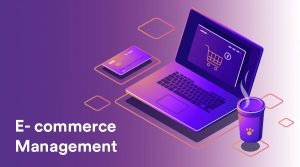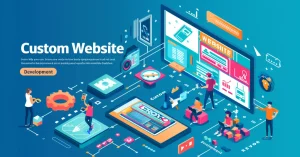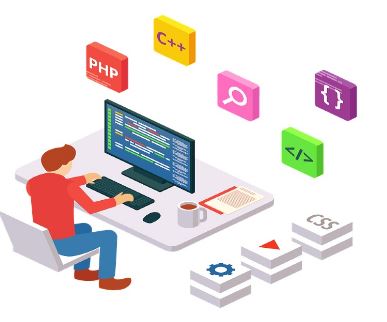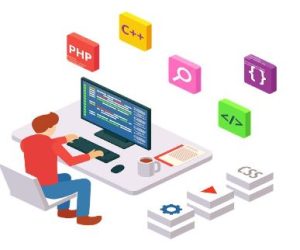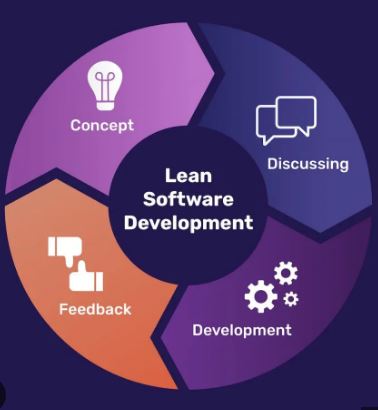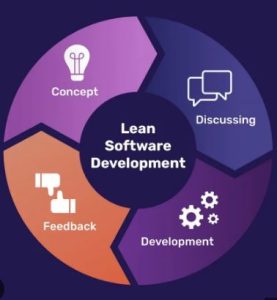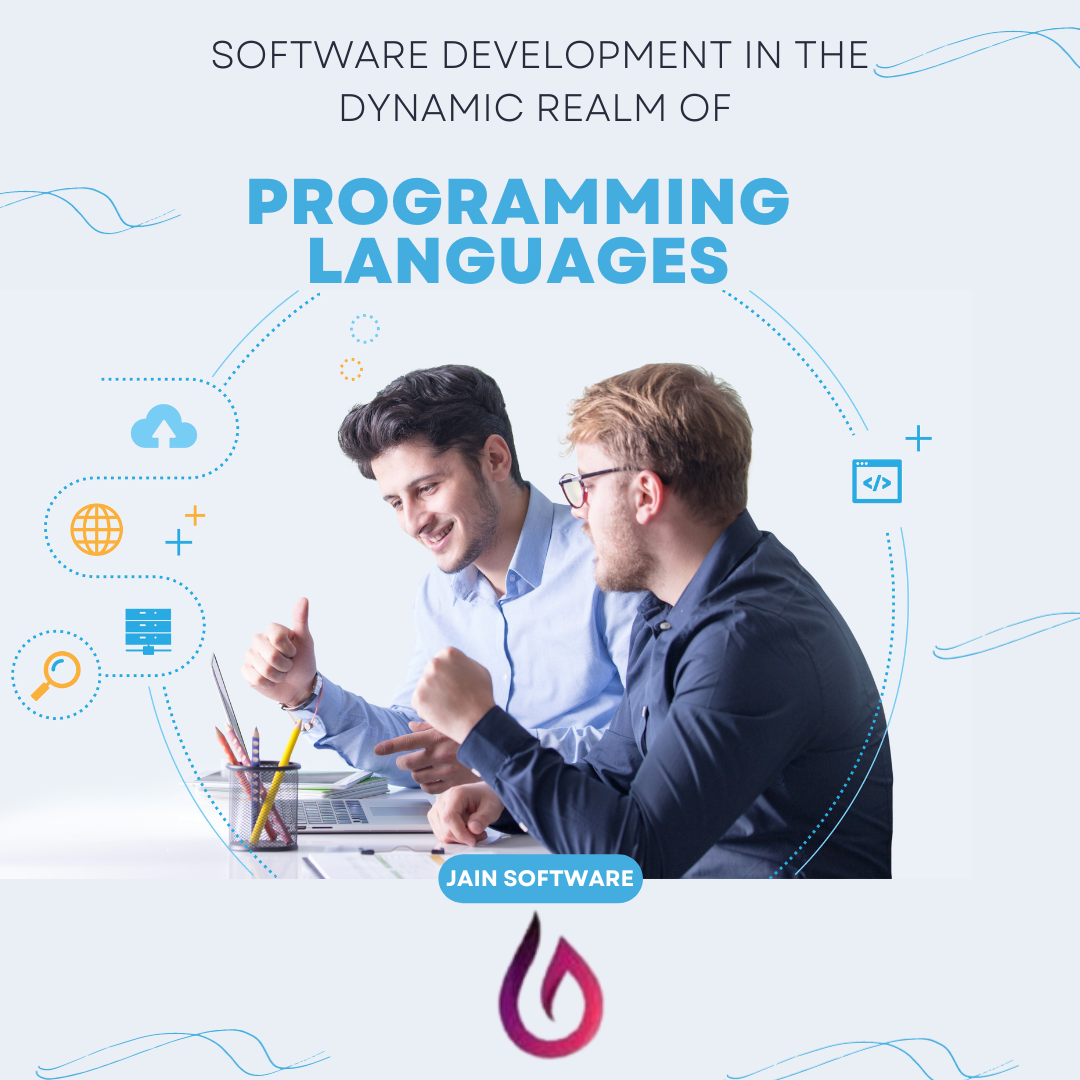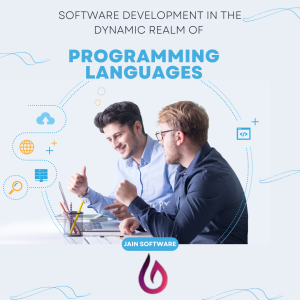Top 5 ERP Solutions by Jain Software
In Official Blog, App development, Artificial Intelligence, Business, custom software development, Services on Perfection
ERP Solutions
Successful management of resources in today’s dynamic business environment is strain important factor. Businesses need tools that help make work easier, allow for increased productivity and promote efficiency across the company. Jain Software is one of the leading IT solutions offering solutions in the realm of Enterprise Resource Planning ERP requirement of a business entity. These ERP systems are customized to serve industries from healthcare to ecommerce allowing organizations to optimize their business in resource management and more on growth.
In this blog, we go deep into the five best ERP solutions of Jain Software which helps businesses unlock their potential.
1. Human Resource Management (HRM) Solution
Human resource management is a key factor for the functioning of every organization because it is the core of its performance. The HRM ERP solution offered by Jain Software is a comprehensive tool for improving company’s HR functions, increasing employees’ satisfaction, and allowing the company to meet the legal requirements of the regional legislation.
Key Features:
Employee Database Management: Data of the employees such as their personal, employment and performance records are stored in a central repository.
Payroll Automation: Salary pay, taxes, and other benefits calculation with the help of computer programs.
Attendance and Leave Tracking: Real time biometric attendance, real time leave management system.
Performance Appraisal Tools: Means for setting up targets and measuring employees performance, then assessing their performance accurately.
Compliance Management: Guarantees that the employee relations policies of the organization complies with local and international standards.
Benefits:
Relieving the process of payroll and attendance management and minimizing mistakes.
Promotes understanding of performance evaluations and increases its fairness for the personnel.
Reduces compliance issues with auto update and notification features to confront.
As a result, any organization in the process of refining its workforce management and creating healthy organizational culture should consider adopting Jain Software’s offered HRM solution.
2. Mobile Customer Relationship Management (CRM) Solution
It is important to incubate good relations with customers in order to increase the business sales. CRM ERP solution at Jain Software specializes in making businesses serve customers better, interact with them, and retain them where necessary.
Key Features:
Lead Management: Captures prospects right from the moment they are identified to the moment they become customers.
Customer Interaction Tracking: Records communication with customers through different interfaces.
Sales Automation: Orders tracking and most of the invoicing process tend to be eased and simplified by this system.
Customer Support Tools: Joint solutions for effective handling of tickets.
Analytics and Reporting: Is useful for developing sales trends and customer buying patterns predictions.
Benefits:
Helps in sales with ease in its lead management and automation process.
Enhances loyalty sending individualized calls to action thereby increasing customer loyalty.
Makes the decision making process easier because it involves the use of detail analytic data.
This solution is particularly ideal for organizations that want to improve their clients’ satisfaction and loyalty.
3. Inventory Management Solution
A proper way of handling inventories is essential in companies that deal with tangible products. Jain Software’s supply chain management and Inventory system are designed to give an accurate management report for tracking inventory and CAD reduction supply systems.
Key Features:
Real-Time Inventory Tracking: Controls stocks in the sense of their availability, position, and, in particular, flow.
Automatic Reordering: Establishes different inventory limits and causes purchasing to happen automatically.
Supplier Management: Controls and monitors suppliers’ performance; handles purchase orders.
Multi-Location Support: Updates and maintains inventory information that is stored in more than one warehouse or store.
Barcode and RFID Integration: Improves the efficiency of managing stocks through the latest tracking system.
Benefits:
Eliminates situations where common items run out or are in excess with accurate inventory prediction.
Helps in cutting an organization’s overhead costs since supply chain processes are well managed.
Helps to improve customer satisfaction because the orders are completed as soon as possible.
It doesn’t matter whether your business is a retail chain or a manufacturing unit, this solution is designed to reduce inventory management issues to the bare minimum.
4. Billing and Financial Management Solution
Finance management is always an important aspect of any enterprise. ERP solution for billing and financial management offered by Jain Software supports organizations to keep perfect financials and work on transactions.
Key Features:
Comprehensive Billing: Supports different billing intervals, recurrent invoices and all the important features of multi-currency transactions.
Expense Tracking: Able to supervise the following of expenditures and prepare account records.
Tax Management: OF decreases the hassle related to tax calculation and compliance reporting by automating the process.
Budgeting Tools: Helps business organizations to strategize and control on aspects of budgeting.
Financial Analytics: It provides information on financial outcomes based on reporting options allowing flexible configuration of charts.
Benefits:
Eliminates many mistakes that the employees are likely to make through automation of billing and tax.
Improves real-time operation in terms of finance by producing quick analytic and report outputs.
Simplifies the process of planning and tracking your expenses so that you are better prepared and aware of surprises in that aspect of the business.
In legibility, this solution is sangat to any organization that targets to have sound financial health and compliance system.
5. E-Commerce ERP Solution
As for e-commerce enterprises, they face a number of conditions that only a extensive ERP system can address. Jain Software offers its ERP for e-commerce where all aspects of the e-commerce business are brought under one umbrella; from inventory to customer service.
Key Features:
Order Management: Comes into force at the moment the order is placed and remains till its delivery.
Product Catalog Management: I am also able to organize the product listings and update them as quick as a wink.
Payment Gateway Integration: Enables the use of multiple forms of payment to enable easy transaction.
Customer Behavior Analytics: Offers information relating to buying behavior and habits.
Marketing Automation: Being an email marketing tool, it enables automated emails, sales, and discounts, and promotions.
Benefits:
Enables efficient operation by providing a way to manage inventory, sales and customers.
The following objectives are achieved in addition to improving the customer shopping experience through faster order processing.
Sells more by employing distinct advertising techniques and using stats to back up its actions.
This is a breakthrough solution for online retailers that are experiencing growth challenges as they expand their business.
https://www.jain.software/5-ways-jain-software-e-commerce-management
Why Jain Software for ERP Solutions?
ERP solutions provided by Jain Software are developed with the goal of making business operations easier for the end-user so that the business can address more important tasks to the software. Here are some reasons to choose Jain Software for your ERP needs:
Customization: Companies are diverse, and that means that Jain Software can provide solutions that apply to a particular business.
Scalability: With regard to this, it is possible to note the factor that the ERP system will be able to increase in proportion to its performance as the business of the enterprise increases too.
Integration: Many of the current tools and platforms come with software that can be easily adapted for the use of Jain’s ERP systems.
User-Friendly Interface: Cuts across all organizational levels in terms of applications and ease of adoption by human resource.
Dedicated Support: Comprises of IT support that is on standby 24/7 to address the needs and resolve the concerns of the that may hinder a good flow of business.
Conclusion
Each business has limited resources and it is a general rule that in order to obtain a good result one has to manage resources efficiently: this is exactly what Jain Software’s ERP solutions do. EN compassing from HRM to e-commerce, these solutions meet the core requirements that helps organizations in its respective fields to optimize the operations, decrease excessive expenses, and attain the objective on time.
Are you gearing up to reengineer your business enterprise with state of the art ERP solutions, Jain software is the ideal partner. Call or email us today for more information on our services and find out how Carving can help secure your company’s future today.
Follow Social Media :
https://www.facebook.com/jainsoftware/
https://www.instagram.com/jainsoftware/
https://www.linkedin.com/company/jainsoftware
https://x.com/jainsoftware


